In February 2016, Q participants gathered to hear about the principles and implications of quantum technology from the ‘Quantum Matter’ panel, comprised of three distinguished quantum physicists.
Local panellists included Professor Stephen Bartlett, who leads a research program in theoretical quantum physics at the University of Sydney, and Professor Andrew Dzurak, director of the research program into silicon-based quantum computing at the University of New South Wales (UNSW). The panel was completed by an international guest, Professor Chao-yang Lu, a leading researcher in quantum physics at the University of Science and Technology China (USTC), and moderated by Project Q’s own Dr. Frank Smith, from the Centre for International Security Studies at the University of Sydney.
Throughout the discussion, panellists considered several common themes: the nature of quantum knowledge, its implications and relevant stakeholders framed the discussion on Quantum Matter.
Quantum Knowledge
Quantum matter, and associated principles about the subatomic world, is a very complex field of enquiry, and as such, debate over the completeness and development of our knowledge about quantum mechanics quickly came to the fore.

Professor Andrew Dzurak (L) with Professor Chao-yang Lu (R) on the Quantum Matter panel (Photo: Gilbert Bel-Bachir)
For example, Dzurak introduced the principle of superposition, which is the idea that a quantum particle exists in multiple states of being simultaneously. It only adopts a single, classical state when observed. Superposition means quantum bits, or qubits, in a quantum computer can undertake multiple computing processes concurrently. It is this parallelism, originally envisioned by Richard Feynman in the 1980s, which is expected to give quantum computers revolutionary power.
The idea of entanglement was also identified as a key concept for quantum technology. Entanglement refers to the inextricable link that can be created between two quantum particles that connects their behaviour over great distances. Or, in Einstein’s words, ‘spooky action at a distance’.
Quantum principles are so ‘weird’ that they are often only considered in fictional or fantasy literature. For instance, Lu argued that Wu Cheng-en’s 16th century Chinese novel Journey to the West described supernatural powers of teleportation, long distance communication, and dualistic personality, many of which now resonate with contemporary quantum principles.
Knowledge Completeness
When considering such bizarre phenomena, how can we distinguish between our own uncertainty or limited knowledge, and that which is truly uncertain in a physical sense? Barlett raised this poignant question. Science is a field that encourages disagreement between thinkers, and current differences over the interpretation of quantum mechanics are not unique. Instead, as Barlett described, today’s debates are reminiscent of the famous disagreement between Albert Einstein and Neils Bohr over the completeness of quantum wave function theory.

Professor Stephen Barlett on the Quantum Matter panel (Photo: Gilbert Bel-Bachir)
Einstein struggled to accept the inherent indeterminism of superposition, claiming there must be more unknown-unknowns because ‘god does not play dice with the universe’. Bohr, on the other hand, maintained that the quantum mechanics fulfilled ‘all rational demands of completeness’, and it should therefore be interpreted as the whole sub-atomic story. Bohr’s interpretation of uncertainty, known as the Copenhagen interpretation and often represented by Schrodinger’s cat, is now widely accepted. But debate over different interpretations of what quantum mechanics actually means about matter and the universe rage on to this day.
This conceptual clash between intellectual giants such as Einstein and Bohr is a useful lens through which to evaluate the merits and limits of our knowledge, both now and in the future. Moreover, Bartlett also challenged the symposium by asking whether it was really necessary to have complete knowledge and understanding of quantum phenomena in order to exploit it in technology.
Technological Momentum
The relationship between science and technology was addressed as well, along with questions about the relationship between knowledge and practice. For instance, conventional computing builds on several decades of innovation in silicon chip technology, as predicted by Moore’s law. Dzurak’s research at UNSW aims to apply such successes with silicon into the quantum realm. Today’s silicon chips are comprised of millions of individual transistors, and Dzurak’s goal is to replace these transistors with qubits. This vision of a quantum silicon chip leverages existing silicon technology and, as a result, ‘doesn’t look enormously different from the microprocessor chips we use today’. If successful, this approach could prove advantageous, given its scalability and industry compatibility.
For better or worse, this project also illustrates the influence of experience and path dependency in science and engineering. The momentum behind the ‘silicon school’ of quantum computing may be significant, and it benefits from a wealth of practical experience and tacit knowledge. Smith asked to what extent this kind of knowledge influenced the conduct and outcomes of research. Dzurak argued that constructing an initial proof of principle could be more art than science, relying greatly on experience and intuition, but repetition and replicable results were the ultimate goal in quantum science and engineering, as elsewhere.
Quantum Technology
Expectations
Whatever the particular path may prove to be, the potential applications of quantum technology was a key consideration. There was a general consensus amongst the panel that the second quantum revolution is well underway and boasting high prospects. Bartlett emphasised that the development of quantum computers is now believed to be inevitable; the debate is no longer about whether quantum phenomena can be harnessed, but how and for what purpose. Lu corroborated this perspective, remarking that significant progress has been made in moving from passive observation to active manipulation and control of matter in quantum technology.
Methods
Still, numerous different approaches are being examined and employed in the hunt for functional devices. For example, Dzurak’s work of implanting phosphorous ions into silicon and using small electro-magnetic pulses to control quantum spin states has delivered promising results. In October last year, his team created the world’s first two-qubit logic gate in silicon, which may be a scalable building block for a quantum computer. Likewise, Lu’s presentation underscored advances in research on the quantum properties of photons for quantum computation and communication. China, like Australia, appears to be making important strides towards quantum tech.
Application
Bartlett argued that quantum innovations will be ‘very useful and potentially quite disruptive’. The implications for international security stand to be profound. That being said, creating functional quantum devices remains challenging.
Likewise, Dzurak suggested that quantum technology represents a revolutionary development for humankind, and posited that quantum simulation is likely to prove the most significant application. The ability to accurately simulate or model physical systems would in turn enable scientists to study DNA and other complex molecules, understand how they interact and measure their properties in ways that are impossible on conventional computers. Such simulation may have revolutionary implications for biotechnology as well as other fields ranging from aerospace to material science.
Lu highlighted comparably profound applications in quantum communication. Principles such as teleportation and entanglement can be used to established quantum key distribution: communication that is completely secure and impervious to eavesdropping. Lu described a Chinese project intended to establish a quantum communication network between Beijing and Shanghai. This project utilises photons travelling through fibre optic links stretching over 2000km, and it will soon see the addition of the world’s first quantum satellite later this year.
Unfortunately, it’s not all quantum flowers and rainbows… the panel elucidated the potentially destabilising impacts of quantum computation. Dzurak commented that the unparalleled processing power could solve the factorising problems that underwrite most of today’s public key encryption protocols. This development has the potential for disastrous effects on global information security. Risks such as these need to be mitigated against, and it is an important reminder of the dual-use nature of technology: it can be used to help or to harm.
Quantum Stakeholders
Whilst there was a sense of pending success and technological optimism, there was also resounding consensus amongst the panel that such achievements require immense funding to overcome outstanding obstacles. This science and technology isn’t cheap. And the resources required appear to create a high barrier to entry, such that only the wealthiest governments and companies can afford this kind of research and development.

Professor Chao-yang Lu (L) with moderator Dr. Frank Smith (R) on the panel (Photo: Gilbert Bel-Bachir)
Whilst there are several reasons why governments would invest for state security, Lu stressed China’s interest in fundamental research. Dzurak argued that corporations such as IBM and Google are making large investments in quantum technology, and the commercial applications may prove more lucrative and significant than military applications.
That being said, there clearly is a race to develop this technology first, which has implications for international conflict and cooperation. On the potential of an international quantum research program, something akin to the Large Hadron Collider in Geneva, the panel was divided. Dzurak suggested that quantum research and development may have moved too far into the realm of commercial intellectual property and national security for global cooperation to be possible. Bartlett agreed but for different reasons, arguing that different interpretations of quantum mechanics may favour different approaches to research and development. Lu noted that collaboration is still possible, arguing that USTC’s relationship with Austrian scientists has played a pivotal role in their research.
Cooperation notwithstanding, it was agreed that progress depends on skilled individuals working in this field. The need for people trained in both quantum physics and engineering will likely increase with time.
The Quantum Matter panel addressed critical aspects of quantum technology, providing an insightful combination of breadth and depth on highly complex issues. Technology that harnesses quantum mechanics may change the world, and, as we contemplate that future, the resounding questions remain: how do we think about it, what do we do with it, and who should be involved?
Zoe Hawkins is a Project Q Research Assistant and is working with Dr Frank Smith on a green paper in quantum policy. She is also a Researcher at the Australian Strategic Policy Institute’s International Cyber Policy Centre. Zoe has a Bachelor of International and Global Studies majoring in Government and International Relations from the University of Sydney and is in the process of completing a Master of International Security.

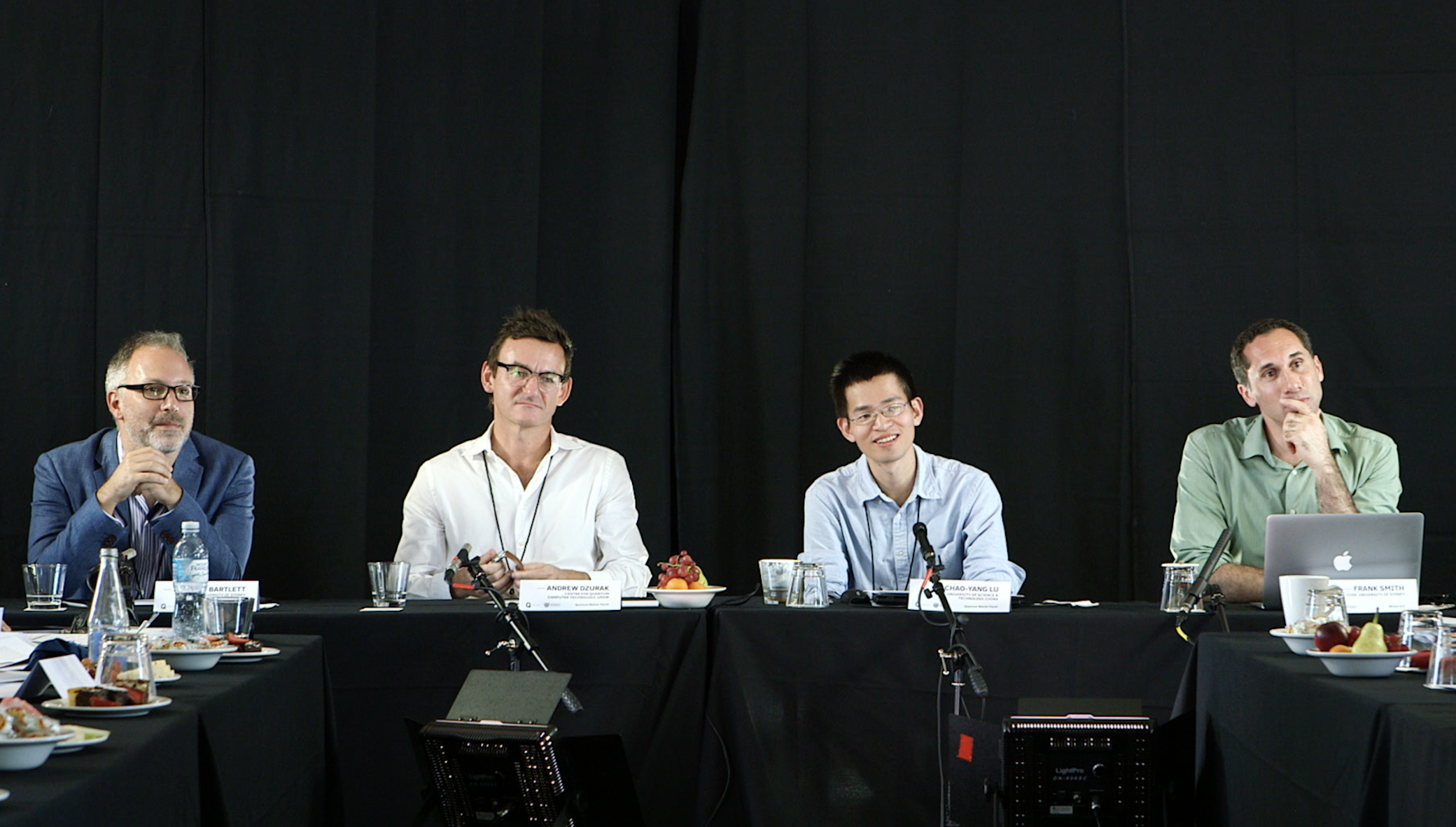
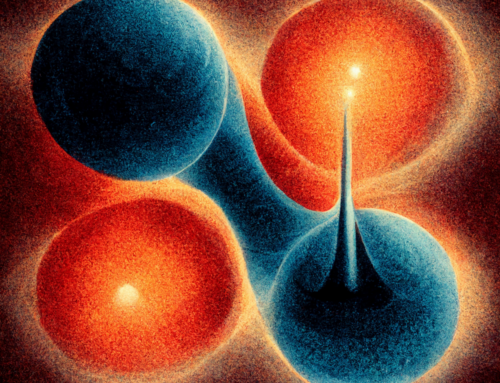
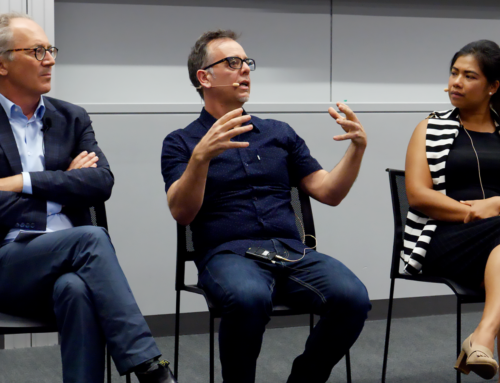
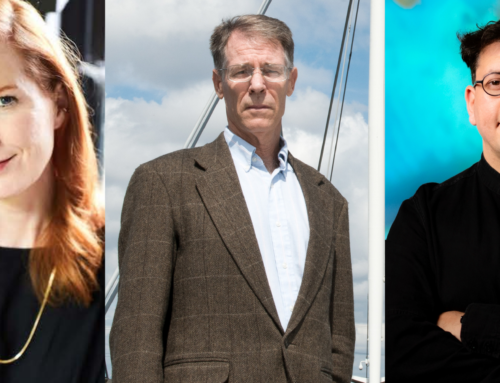

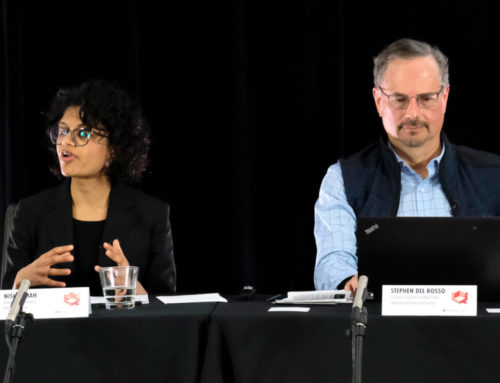
[…] on from the Quantum Moment and Quantum Matter panels on the previous day, Q participants gathered to contemplate the implications of quantum for […]